Far more than fun and games: The approach behind 6 play-based activities in a Y classroom

YMCA of Greater Toronto Child Care centres ignites curiosity and discovery in children who attend. Our centres offer activities based on the children’s interests, as recommended in our YMCA Playing to Learn™ and YMCA A Place to Connect™ curricula.
When you look at an activity setup, you see fun: Toy boats in a tub of water or cool wall art of the night sky. However, did you know that all these setups are intended to expand children's learning?
This blog highlights six of our favourite activity setups from YMCA Child Care centres across the Greater Toronto Area. Your child may participate in some of them. Activities vary from centre to centre depending on the interests of the children in the classroom. However, the intention behind our various activities remains the same: To provide learning opportunities through play.
Activity #1: Pet store
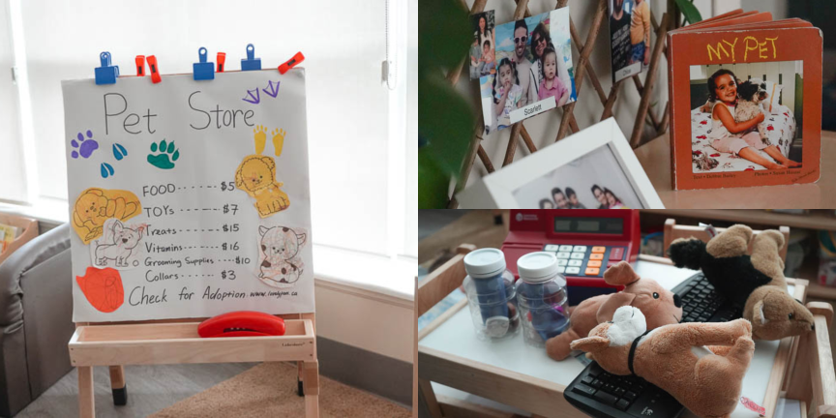
What you may see: A cute dog and pet store toys for children to pretend they work in a pet store.
What an educator at the Toronto Pinnacle YMCA Child Care Centre saw:
In our toddler room, the children were learning about veterinarians, which progressed into pets and animals we have at home. To further scaffold this interest, we turned our dramatic centre into a pet store, allowing them different learning opportunities.
Items like a cash register or a toy phone help the children act out real-life experiences and enhance their role-playing abilities. As well, providing print in the environment can help the children familiarize themselves with the letters of the alphabet and further develop their vocabulary.
Activity #2: Float or sink
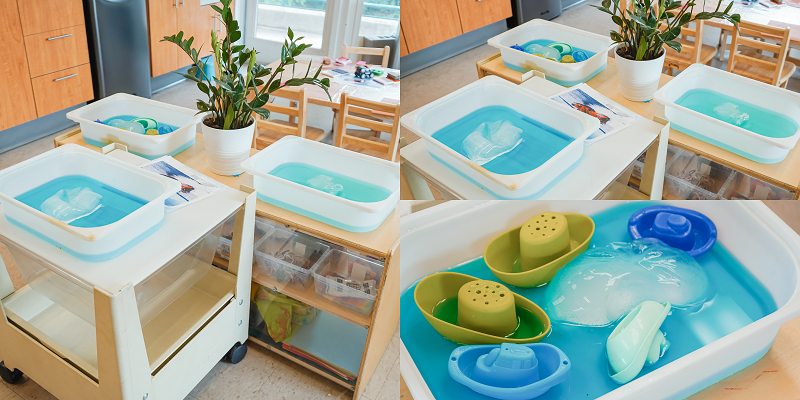
What you may see: Boats floating in a tub of water.
What an educator at the North York YMCA Child Care Centre saw: An opportunity for children to experiment and learn about buoyancy and density. This open-ended experience allowed children to explore various materials, textures or weights that float or sink. Prediction and logical thinking increase children's confidence to investigate the world around them.
Activity #3: World of bugs

What you may see: A toy insect with fake leaves on a tray.
What an educator at the North York YMCA Child Care Centre saw: By exploring the world of bugs, children learn about science, nature, and the environment in an interactive and engaging way. Exploration activities develop observation skills, critical thinking, and creativity. As children engage in play, they explore insects in their natural habitat. This allows them to learn about where they live, what they eat and how they look. By introducing insects' lifecycle, concepts it extends learning.
Activity #4: Summer snacks
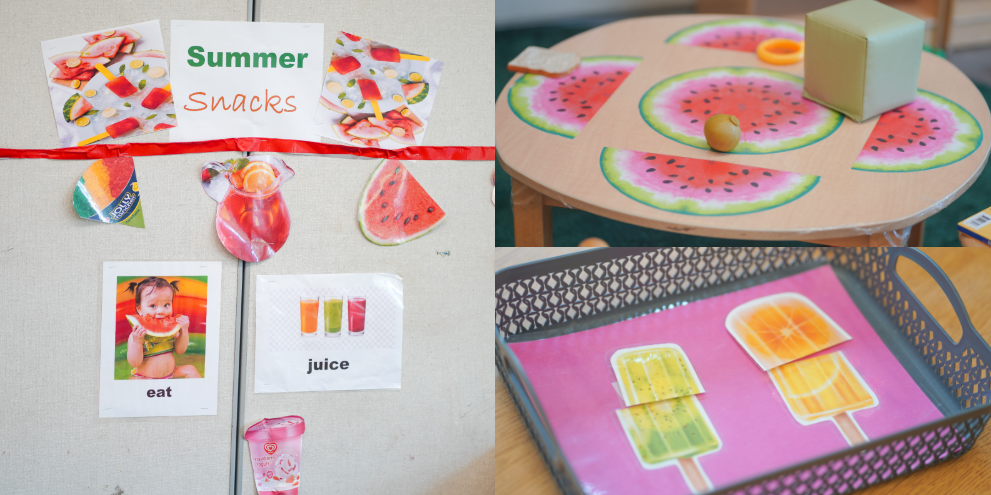
What you may see: Popsicles, watermelon, and fruit cut-outs used as wall art and classroom décor.
What an educator at the Brampton YMCA Child Care Centre saw: The summer experiences provided hands-on experiences related to children’s daily life, like drinking lemonade on a hot day. They explored textures and built their fine motor skills by squeezing playdough, enhanced their imaginative skills when they made playdough ice cream and cake and developed their language skills by talking about the colours and flavours of their pretend ice cream and popsicles.
Activity #5: Camping skills
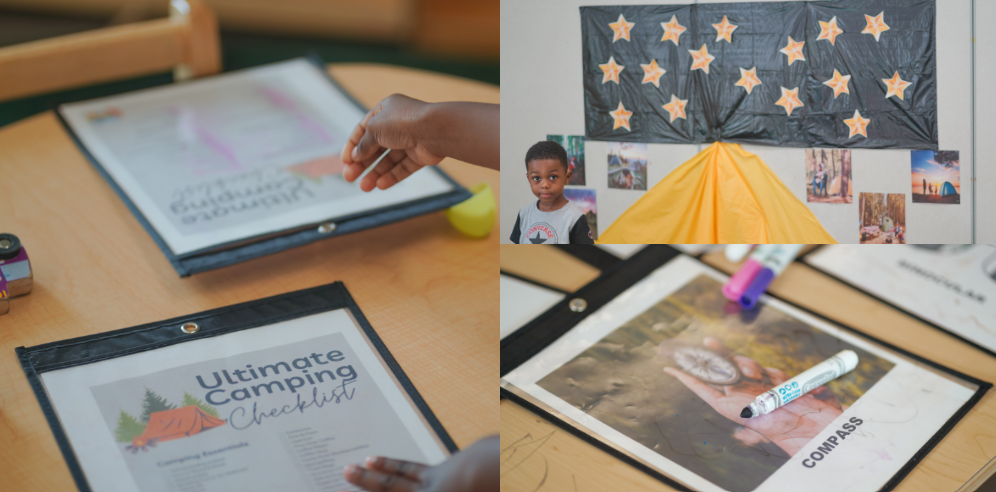
What you may see: A cute camping setup for children for pretend play.
What an educator at the Brampton YMCA Child Care Centre saw: We made observations, recorded them, and planned accordingly. As per our YMCA Playing to Learn™ curriculum, “Play is essential to the healthy social-emotional, physical, and cognitive development of all children, and is a sound basis for future academic success.”
This camping activity setup allows children to explore and provides the opportunity to learn more about a camping environment, strengthens their camping skills, and have fun playing with the camping items. This setup was initiated by a preschooler's interest in camping.
Activity #6: Seashell imprints
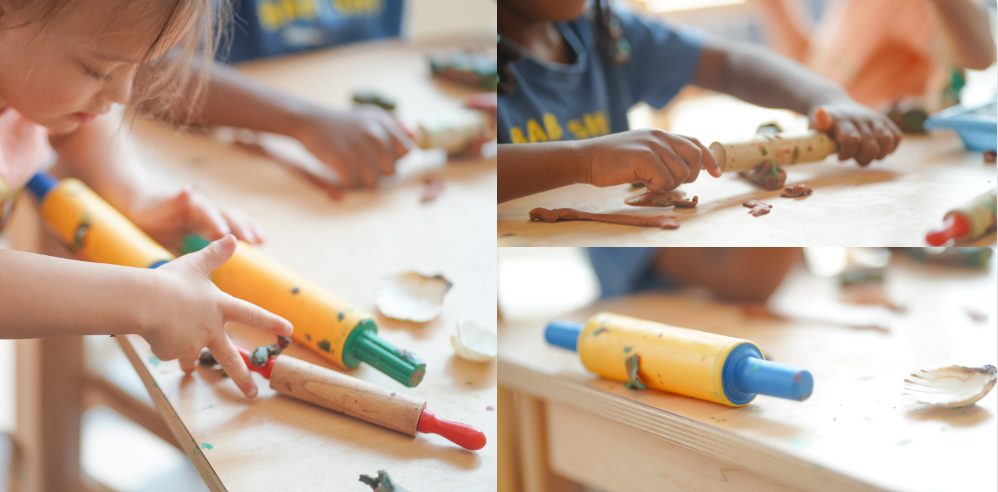
What you may see: Children playing with playdough using a rolling pin.
What an educator at the Brampton YMCA Child Care Centre saw: Through this activity the children manipulated playdough to make imprints of seashells on it. This activity was designed to support children's beach interests. First, they learned about things we can find on the beach and then, to enhance their learning, we placed different kinds of seashells. This activity allowed the children to strengthen their fine motor skills and self-concept skills.
This activity gave the children the freedom to choose any shell they wanted to make an imprint and were able to generate their own form of experience. Play dough also provides children with sensory exploration opportunities and an open-ended play experience to enhance their creativity. Children learn though play as it allows them to nurture their self-expression and creativity.
As you can see all activities in your child’s classroom cater to their interests and learning needs. Children grasp complex concepts while playing with the materials and resources they’re given. Want to learn more? Read our parent handbooks to see what our curricula YMCA Playing to Learn™ and YMCA A Place to Connect™ is all about.











